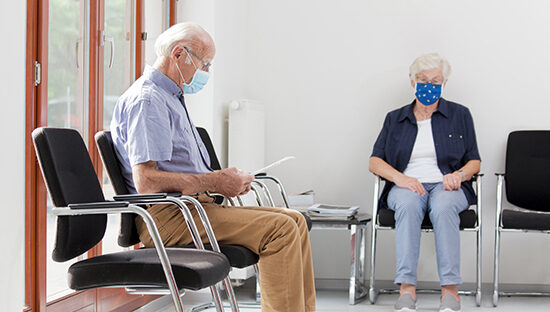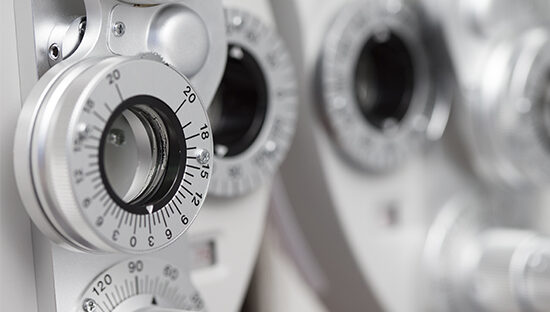
Why are IPC cleaning standard important?
Over the last two years, the demand for hospital treatment was outstripping the capacity of UK’s national health service which have led to significant backlogs and longer waits for patients. Recent data shows that a record of over 7 million people are currently waiting for treatment. It will take years to clear the backlog. This adds pressure to the ongoing need for stringent infection prevention control measures. Infection prevention and control standards help healthcare organisations to prevent and control the spread of hospital-acquired infections.
Manual cleaning and disinfection of environmental surfaces in healthcare facilities (daily and at patient discharge) are essential elements of infection prevention programmes. Throughout the course of the COVID-19 pandemic in the UK, the Government advised that more stringent cleaning practices were needed to help reduce the risks of transmission and as a result, there has been large guidance and ‘best practice’ documents produced by the NHS. The status quo that was previously accepted has been disturbed and it will impact the approach going forward in ensuring patient and staff safety.
As many factors make it difficult to achieve high rates of effective disinfection on a routine and sustained basis, continued efforts to improve the quality and consistency of traditional cleaning and disinfection practices are needed. Given the many challenges in achieving desired levels of surface disinfection, adoption of modern technologies is indicated to supplement traditional methods. As additional data become available, it is likely that newer liquid disinfectants and some no-touch room decontamination systems will be more widely adopted to supplement manual cleaning and disinfection practices.
The unprecedented attention that our cleaning routines have garnered, with the spotlight on infection prevention and control measures, means that now, more than ever, staff and patients are taking an interest and expanding their knowledge around what creates safe environments. We look at the NHS manual cleaning policy, combined with our extensive technology knowledge and customer experience of over 50% of NHS Trusts, to summarise current approaches and how this should influence positive development in creating a sustainable long-term strategy.
Current IPC cleaning standards in healthcare settings
In the UK, the most used cleaning solution in healthcare settings contains a chlorine-based agent. However, that can change to a general-purpose detergent, alcohol wipes, hypochlorite, or other conventional disinfectants depending on the area and the surface. General purpose commercial detergents usually contain non-ionic alcohol ethoxylates, which have been proven to be effective at killing microorganisms but may have some negative effects on surfaces, especially plastics. Therefore, alternatives such as non-ionic and amphoteric surfactants should be considered, due to their effectiveness at killing pathogenic microorganisms, and having less damage on surfaces, plastics included.
Briefly, some of the tasks performed by cleaning staff include floor cleaning, general cleaning, cleaning with microfibre clothes, cleaning with pressurised steam and other forms of cleaning with the use of disinfection technologies. Cleaning is usually performed using a combination of dust-controlling, damp-mopping, spot-mopping, spray cleaning scrubbing and other cleaning tasks. The solutions used usually contain chlorine-based agents or general-purpose detergents or conventional cleaning products.
The impact of the excessive use of chlorine during cleaning
During the cleaning process, mop heads and solutions are replaced to avoid contamination of the solution. However, using chlorine over time in an excessive manner can have negative impacts on the surfaces of equipment and medical devices and may promote cracks formation. This can hinder the efficacy of a cleaning and disinfection process. It is vital to ensure surfaces are compatible prior to the cleaning process, and also to ensure cleaning staff and nurses receive adequate training and are aware of these issues.
In addition to damp-mopping, the use of microfibre cloths has been highly recommended by the NHS. Microfibre mops and cloths are made of composite synthetic fibres which are extremely fine and are engineered to have a large surface area. This gives a much greater effective cleaning capacity and enables the extremely efficient removal of microscopic particles. Many hospitals using microfibre cloths have reported that the time taken to perform cleaning tasks has reduced, and that the introduction of microfibre has been followed by improvements in measured cleaning scores.
However, there are limitations on the use of microfibre cloths. They are designed to be used dampened only with water, and therefore should not be used in conjunction with chlorine-based disinfectant cleaners or other biocides. Used cloths will contain potentially harmful contaminants.
A separate cloth should be used for each patient area and cloths must be thermally disinfected. Microfibre cloths are less effective when used on old and damaged surfaces because of repeated snagging and perform best in the routine maintenance of surfaces which are not heavily soiled.
How the type of surface affects cleaning standards in healthcare
Correspondingly, the type of surface being cleaned or disinfected can affect the completeness with which bacteria are removed. For example, Ali et al. found that the type of material from which bed rails were made affected how well they could be cleaned by microfibre cloths, and that bacteria were removed more effectively by antibacterial wipes than by microfibre.
However, microfibre was more effective at removing debris. Mopping will be able to remove the presence of any soiling that protect the microorganisms and make it fully exposed to the disinfection technology.
Surfaces compatibility must be considered prior to implementing any sort of cleaning protocol. In addition, terminal cleaning of previously occupied rooms is done using a hypochlorite disinfectant cleaning agent which can be very abrasive on surfaces, especially when combined with other chemicals. It was proven to promote hot spots formation on stainless steel – which can promote bacterial growth and eventually lead to biofilm formation.
When using disinfectants such as chlorine, ventilation in the room should be increased during and after cleaning. The use of decontamination technologies such as hydrogen peroxide vapour (HPV) and ultraviolet (UV-C) light in these types of rooms has been increasing within healthcare settings, especially after the onset of the current COVID-19 pandemic.
When thinking of sustainable cleaning strategies, we need to consider all the factors, most importantly the long-term effect of new policies and practices. These should include staff commitment and engagement, supply chains, continuous monitoring of trends, carbon footprint, any adverse effects.
Manual cleaning and human error
Multiple studies have shown that manual cleaning and disinfection of surfaces in hospitals is suboptimal. In many facilities, only 40 to 50% of surfaces that should be cleaned are wiped by housekeepers. In addition, observational methods combined with use of adenosine triphosphate (ATP) bioluminescence have shown that individual housekeeper performance varies considerably. In addition to the above personnel-related issues, there are many other factors that can potentially have adverse effects on the efficacy of traditional cleaning and disinfection practices.
Contamination of disinfectant solutions can occur, particularly if recommendations for their use are not followed. For example, Kampf and colleagues reported that 28 buckets from 9 hospitals contained surface-active disinfectants (e.g., quaternary ammonium solutions) that were contaminated with Achromobacter or Serratia strains. Buckets and roles of wipes had not been handled according to manufacturer recommendation.
In studies that involved culturing high-touch surfaces in patient rooms before and shortly after housekeepers had performed routine cleaning, it was found that cultures obtained from several surfaces in one room after cleaning yielded large numbers of Serratia and smaller numbers of Achromobacter which were not present before cleaning.
In addition, numerous studies have found that standard manual cleaning or disinfection of surfaces can reduce, but often does not eliminate, important pathogens such as Clostridium difficile, staphylococci including methicillin-resistant Staphylococcus aureus (MRSA), vancomycin-resistant enterococci (VRE), and multi-drug-resistant Acinetobacter. It has been evidently suggested in the literature that manual cleaning can provide significant outcomes in reducing pathogenic microorganisms when combined with HPV or UV-C light.
No-touch automated decontamination technologies
In HPV technology, a high-level disinfectant, hydrogen peroxide (5%-35%), is turned into a gas in a sealed hospital room. HPV technology has been developed for use in healthcare settings. The most common use is for terminal cleans of single rooms and bays. HPV has been evidently associated with significant log reductions when combined with manual cleaning. It showed promising activities against the most common hospital pathogens including MRSA, C.Diff, VRE, Klebsiella, Acinetobacter, Serratia, Mycobacterium tuberculosis, fungi, and viruses.
Laboratory-based and in-hospital studies documented significant reductions (6log) of a number of these pathogens. In before/after trials, when used in conjunction with other measures, the hydrogen peroxide vapor system have contributed to control of outbreaks caused by MRSA, multi drug-resistant Gram-negative bacteria, and C. difficile. A prospective, controlled trial performed by Passaretti et al. demonstrated significant reduction in the risk of acquiring multidrug-resistant organisms, especially VRE. Recent improvements in the efficiency of the system permit more rapid turnaround times than earlier equipment, which may lead to wider adoption.
Automated mobile ultraviolet light devices that continuously emit UV-C in the range of 254 nm wavelength can be placed in patient rooms after patient discharge and terminal cleaning has been performed. UV-C light emitting devices can be set to kill vegetative bacteria or to kill spores. Such systems have shown to reduce the VRE and MRSA by four or more log10, and C. difficile by 1–4log.
There is a risk to future cleaning strategies where over-reliance on automated technologies may be detrimental to manual cleaning protocols. It is vital that these two practices, manual and automated, are seen as complementary and not a replacement for each other.
Without conducting manual cleaning efficiently before automated cleaning is begun, soiling may be left behind and will limit the impact of the automated cleaning which is necessary to remove microorganisms that manual cleaning cannot. A harmonious balance must be deployed between the two, constantly feeding into each other in a continuous cycle that maximises efficiency.
Final thoughts
Implementation of strategies need to protect staff from the threat of viruses, but also their mental health, so they aren’t burned out and disengage from the objective. Ongoing acquisition of PPE and investment in training and education is required to keep the staff administering cleaning protocols safe and able to perform their duties to the best of their abilities, using the technology and equipment provided to them as effectively as possible.
During the onset of COVID-19 pandemic, many NHS Trusts have started incorporating decontamination technologies in their cleaning strategies – which enabled them to control the emergence of any outbreak and reduce rates of transmission.
The NHS have succeeded in setting a benchmark for good practice, stemming from their years of experience and knowledge, which will allow healthcare settings and workplaces alike to provide better protection against infections for the people under their care.
From pooling resources across health facilities and workplaces, the many minds will be able to harness data from the different environments, staff responsibilities and various stakeholders of influence to create even better solutions, but this may not be ‘one size fits all’.




